The Victoria Sponge Cake is a timeless British dessert. It has been a staple in UK bakeries for centuries. This classic treat is a must-try for anyone who loves baking.
Made with simple yet high-quality ingredients, this cake is a masterclass in traditional British baking. Its significance extends beyond its delicious taste. It represents a rich cultural heritage.
For those looking to create this traditional British dessert, our guide will walk you through the process. It makes it easy to achieve a delicious victoria sponge cake at home.
Key Takeaways
- Understanding the significance of Victoria Sponge Cake in British culture
- Learning the basic ingredients required for a classic sponge cake
- Discovering tips for making a traditional British sponge cake
- Exploring the history behind this beloved UK treat
- Getting started with making your own victoria sponge cake at home
The History and Heritage of Victoria Sponge Cake
The Victoria Sponge Cake is a key British dessert with a long history. It’s not just a sweet treat; it’s a symbol of British heritage.
Royal Origins: Named After Queen Victoria
The cake is named after Queen Victoria, who ruled England in the 19th century. It’s thought the Queen loved this cake, which is why it bears her name. This royal connection made it even more popular in Britain.
Evolution of the Recipe Through British History
The Victoria Sponge Cake’s recipe has changed over time, shaped by British history. The traditional recipe has seen updates, adding new ingredients and methods. Here’s a quick look at its evolution:
| Period | Influence on the Recipe |
|---|---|
| Victorian Era | Original recipe developed, focusing on simplicity and quality ingredients. |
| Post-WWII | Rationing led to changes in ingredients, making the cake more available. |
| Modern Times | New flavors and dietary options, like gluten-free, were added. |
The Victoria Sponge Cake’s evolution shows how British tastes and society have changed. Yet, it remains a cherished classic.
What Makes a Victoria Sponge Cake Easy UK Recipe Authentic
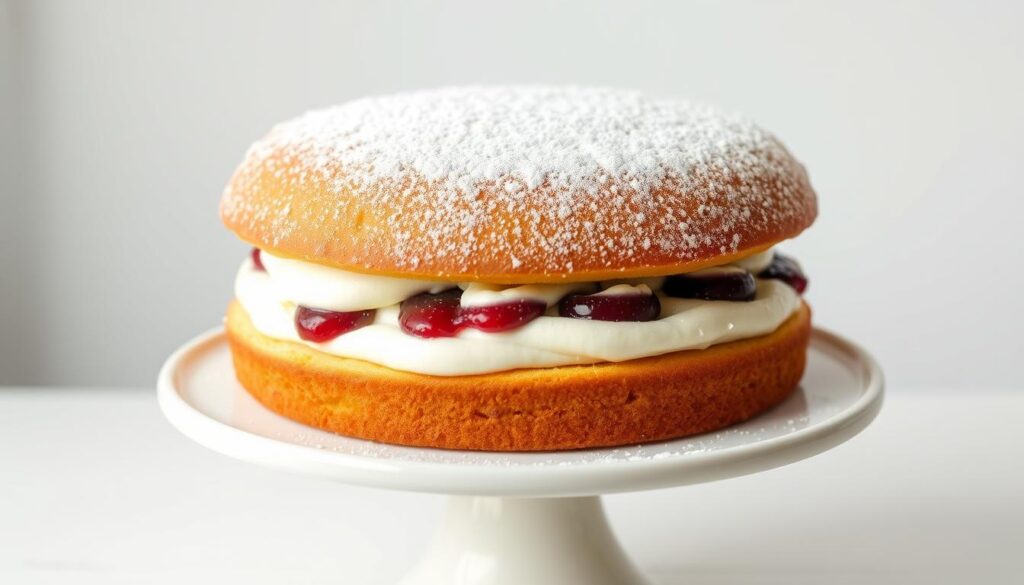
To make a real Victoria Sponge Cake, knowing the traditional ingredients is key. Each part of the recipe is important for the cake’s taste and feel.
Traditional Ingredients and Their Purpose
The classic Victoria Sponge Cake uses high-quality flour, sugar, eggs, and butter. It also needs raspberry jam and whipped cream for the filling. Each ingredient adds something special: eggs and butter make it moist and rich. Jam and cream add sweetness and a bit of tanginess.
The Hallmarks of a Perfect Victoria Sponge
A great Victoria Sponge Cake is light and airy. It has a delicate balance of flavors. The cake should be evenly baked, with a soft crumb that doesn’t overwhelm the filling.
The raspberry jam should be tart, balancing the cake’s sweetness and the cream’s richness.
Related: Authentic UK Treacle Tart Recipe: A Sweet Delight
Essential Equipment for Baking Your Victoria Sponge Cake
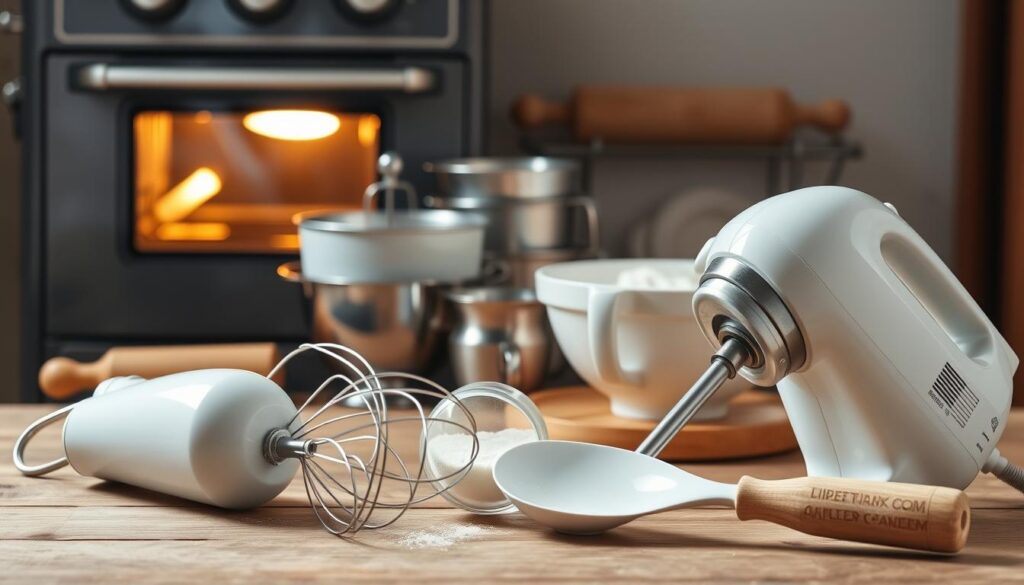
Having the right tools is key to baking a tasty Victoria Sponge Cake. You’ll need specific equipment to make sure your cake is light and fluffy.
Must-Have Baking Tools
You’ll need a few essential baking tools to begin. These include:
- Two 8-inch round cake pans
- A non-stick coating or parchment paper for easy cake release
- A mixing bowl and electric mixer for creaming the butter and sugar
- A measuring jug and spoons for accurate ingredient measurements
These tools are vital for getting the right texture and structure in your Victoria Sponge Cake.
Optional Equipment That Makes the Process Easier
While not essential, some optional equipment can simplify the baking process. Consider using:
- A digital scale for precise measurements
- A cake leveler to ensure even layers
- A turntable for easy cake assembly and decoration
These tools can make your baking experience better and give your cake a professional look.
Ingredients for a Classic Victoria Sponge Cake
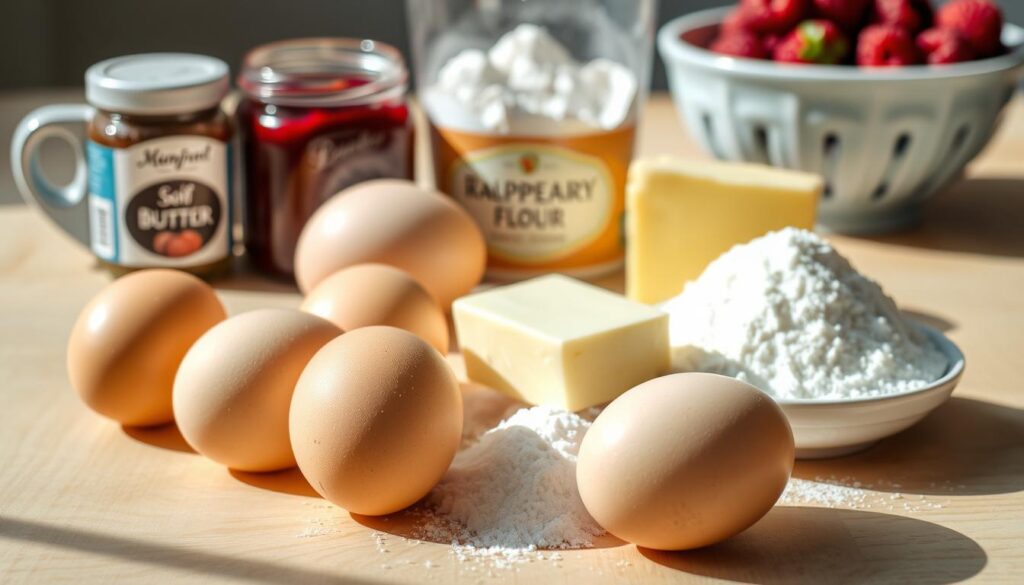
A classic Victoria Sponge Cake needs simple yet precise ingredients. You’ll focus on the quality and amount of each part to make this traditional British dessert.
The Cake Layers: Measurements and Substitutions
To make the cake layers, you’ll need 2 cups of all-purpose flour, 1 cup of granulated sugar, and 4 large eggs at room temperature. High-quality ingredients like unsalted butter and pure vanilla extract improve the taste. You can swap all-purpose flour with cake flour for a lighter texture or use almond flour for a gluten-free version, adjusting the ratio as needed.
The Filling: Traditional vs. Modern Options
Traditionally, the cake is filled with raspberry jam and whipped cream. The jam adds a sweet and tangy contrast, while the whipped cream makes it luxurious. For a modern twist, try strawberry or apricot jam or chocolate ganache. The goal is to find a balance that doesn’t overwhelm the cake’s delicate taste.
By choosing your ingredients wisely and exploring both traditional and modern options, you can make a Victoria Sponge Cake that’s both true to its roots and fresh.
Step-by-Step Preparation of the Cake Batter
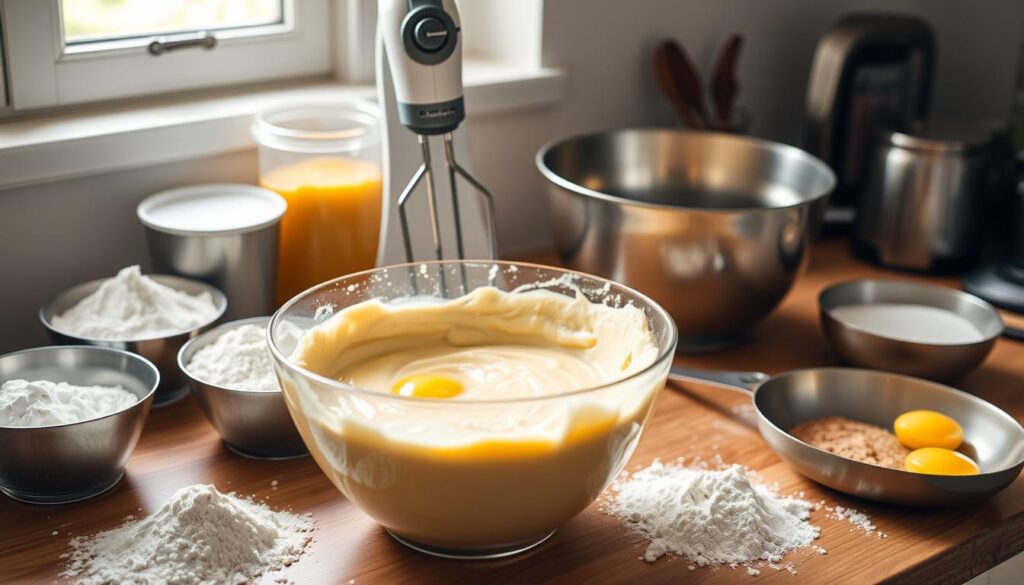
To make a Victoria Sponge with its light and fluffy texture, follow our guide. It covers two key steps: creaming and adding dry ingredients.
The Creaming Method: Getting the Perfect Texture
The creaming method is key for your Victoria Sponge Cake’s structure. It means beating butter and sugar until they’re light and fluffy.
Butter and Sugar Consistency Tips
Make sure your butter is at room temperature before starting. This ensures a smooth mix with sugar. Soft butter creams better, making your cake tender.
Adding Eggs Without Curdling
Add eggs one at a time, beating well after each. This stops the mix from curdling. If it starts to curdle, add a spoonful of flour to fix it.
Incorporating Dry Ingredients Without Overmixing
After creaming, it’s time to mix in the dry ingredients. Be gentle to avoid a dense cake.
Folding Techniques for Light Texture
Use a spatula to fold dry ingredients into the creamed mix. Start at the bottom, rotating the bowl. This keeps the air in.
Final Batter Consistency Check
The batter should be smooth and ready to drop. If it’s too thick, add more liquid. A smooth batter bakes evenly.
By following these steps and tips, you’ll get a cake batter perfect for a light, fluffy Victoria Sponge Cake.
Baking Your Victoria Sponge to Perfection
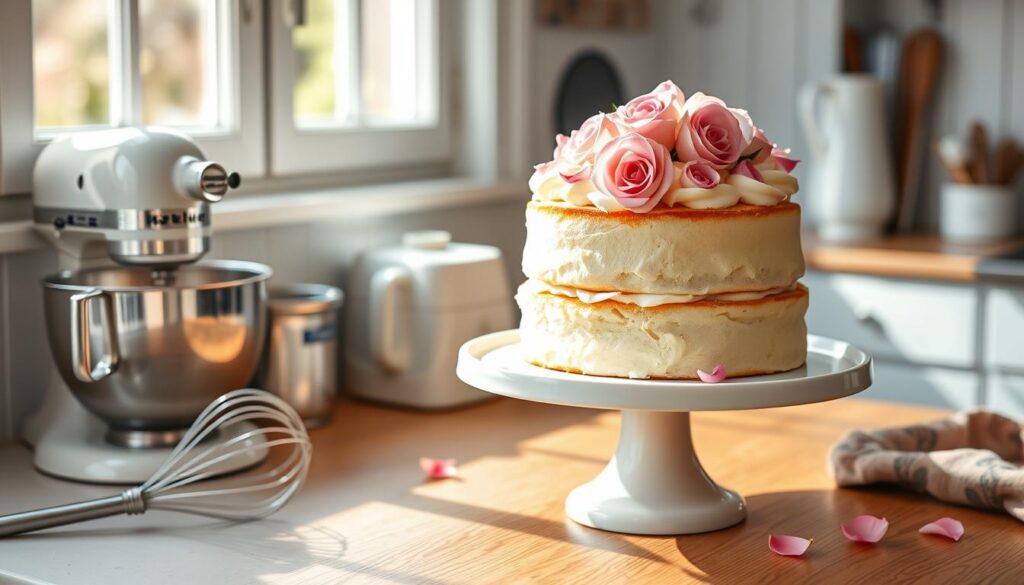
The secret to a perfect Victoria Sponge is in the baking. It’s all about the oven temperature and where you place it. These details are key.
Oven Temperature and Positioning Tips
Don’t skip preheating your oven. It’s essential for even baking from the start.
Preheating Importance and Rack Placement
Preheat your oven to about 350°F (180°C) for a Victoria Sponge Cake. Place the rack in the oven’s center. This ensures even baking.
Dealing with Hot Spots in Your Oven
Oven hot spots can be tricky. To avoid them, rotate your cake halfway through baking. This helps bake the cake evenly.
How to Tell When Your Cake Is Done
Checking if your cake is done is vital. There are a few ways to know for sure.
Visual Cues for Perfect Doneness
Look for visual signs to check if your cake is done. It should be golden brown on top and spring back when touched.
The Toothpick Test and Other Methods
The toothpick test is another good method. Stick a toothpick into the cake’s center. If it’s clean or has a few moist crumbs, it’s done. You can also use a cake tester or check if the cake edges release easily from the pan.
Cooling and Preparing for Assembly
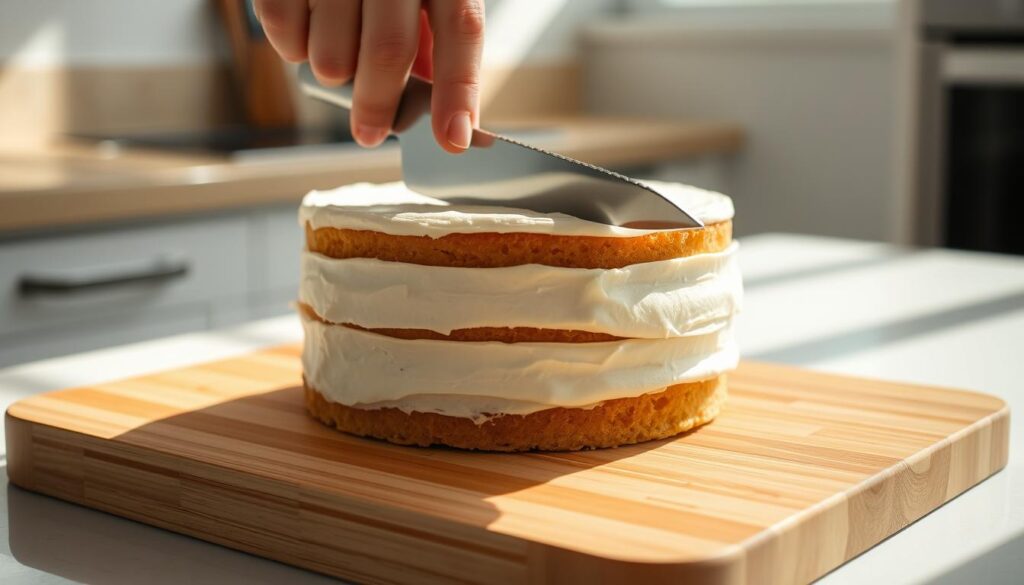
Proper cooling is key to keeping your Victoria Sponge Cake perfect. It stops the cake from falling apart, keeping it light and fluffy.
Proper Cooling Techniques to Prevent Collapse
First, take the cake out of the oven and let it cool in the pan for a bit. Then, move it to a wire rack to cool all the way. This prevents the cake from becoming soggy because of trapped heat. Cooling can take up to an hour, depending on the cake’s size.
Cooling the cake on a wire rack lets air circulate around it. This helps it cool evenly and lowers the chance of it falling apart.
Leveling and Trimming Your Cake Layers
When your cakes are cool, it’s time to level and trim them. Use a serrated knife or a cake leveler to make sure they’re even. This is important for a stable Victoria Sponge Cake. Cut off any domed tops or uneven edges to make flat surfaces for stacking.
Leveling and trimming your cake layers makes a stable foundation for your Victoria Sponge Cake. It ensures your cake looks as great as it tastes.
Creating the Classic Jam and Cream Filling
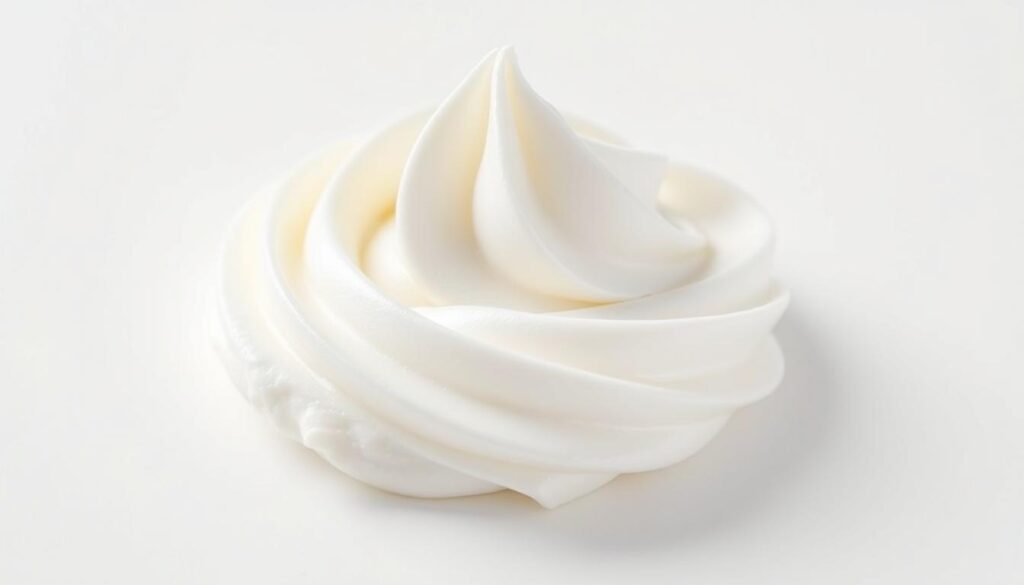
To make a real Victoria Sponge Cake, you need to get the jam and cream filling right. This filling makes the Victoria Sponge special. It adds a sweet and tangy taste to the light sponge.
Selecting and Preparing the Perfect Jam
The jam used in Victoria Sponge Cake is raspberry. It’s made with fresh raspberries and a bit of sugar. Choose a jam that’s not too sweet and has a nice flavor balance.
If you’re making your own jam, use top-quality ingredients. Make sure it’s cooked just right.
Here’s a simple recipe for homemade raspberry jam:
| Ingredient | Quantity |
|---|---|
| Raspberries | 2 cups |
| Granulated Sugar | 1 cup |
| Lemon Juice | 1 tablespoon |
Whipping Cream to the Ideal Consistency
Whipping cream is an art that needs finesse. The cream should be stiff but smooth. Be careful not to whip it too much, or it will turn into butter.
To get the cream just right, use cold heavy cream. Whip it in a cold bowl with cold beaters. A little sugar or vanilla can improve the taste, but don’t add too much.
Assembling Your Victoria Sponge Cake
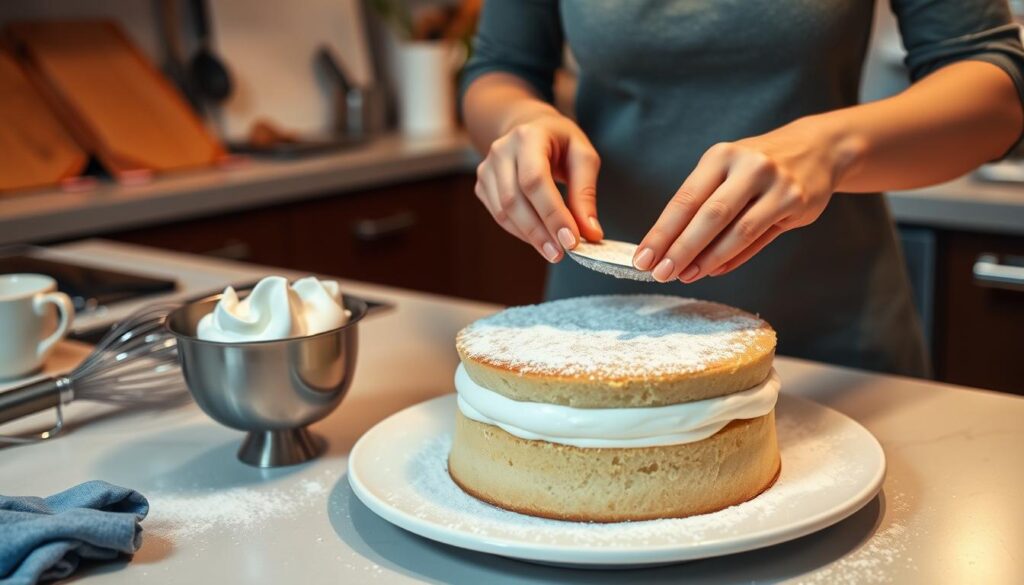
The magic happens when you assemble your Victoria Sponge Cake. It turns simple parts into a delightful dessert that will wow everyone. This step involves layering your cake and filling carefully to get a stable and beautiful result.
Layering Techniques for Stability
To start, place one cake layer on a serving plate or cake stand. Make sure it’s centered and flat. Here are the important steps:
- Spread a lot of jam on the top of the first cake layer, leaving a small border around the edges.
- Whip your cream until it’s stiff but pourable.
- Put the whipped cream over the jam, or pipe it in a pretty pattern.
- Gently place the second cake layer on top, pressing down to stick the two together.
Traditional Finishing Touches
The finishing touches make your Victoria Sponge Cake truly special. Dust the top with powdered sugar for a classic look. You can also add fresh fruit or a few sprinkles to make it look even better. The goal is to keep it simple and elegant, so the cake’s beauty shines.
By using these layering and finishing techniques, you’ll make a Victoria Sponge Cake that’s not just tasty but also stunning.
Serving and Storing Your Victoria Sponge Cake
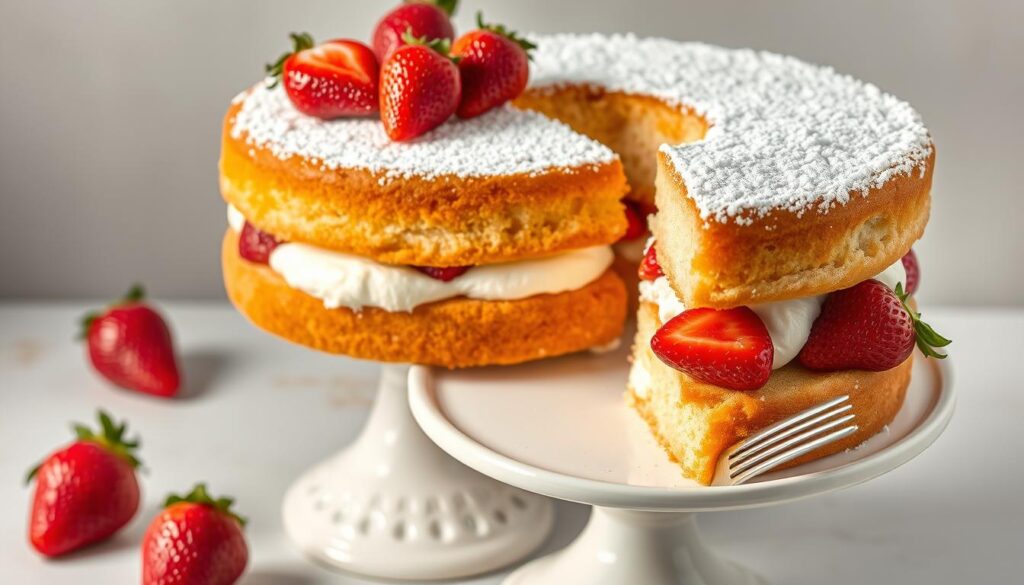
Serving and storing your Victoria Sponge Cake right is key. How you present and keep your cake affects its look and taste.
Traditional Serving Suggestions
Traditionally, you dust the cake with powdered sugar for elegance. It’s best with a cup of tea, a classic British combo. Use a tiered cake stand to make it the event’s highlight.
For a personal touch, add fresh fruit or edible flowers. They add color and flavor. Slice the cake evenly with a sharp knife to avoid crumbling.
Storage Tips to Maintain Freshness
To keep your cake fresh, store it right. Cool the cake, then put it in an airtight container. This stops moisture from making it soggy. If you’ve already filled it, eat it within a day for the best taste.
For longer storage, keep the cake layers and filling separate. Wrap each layer in plastic or foil. Store them in a cool, dry spot. Make the filling fresh when you’re ready to assemble the cake again. This keeps the cake’s texture and taste.
Follow these tips to enjoy your Victoria Sponge Cake at its finest. Whether sharing with friends or enjoying alone, it’s sure to impress.
Variations on the Classic Victoria Sponge Cake
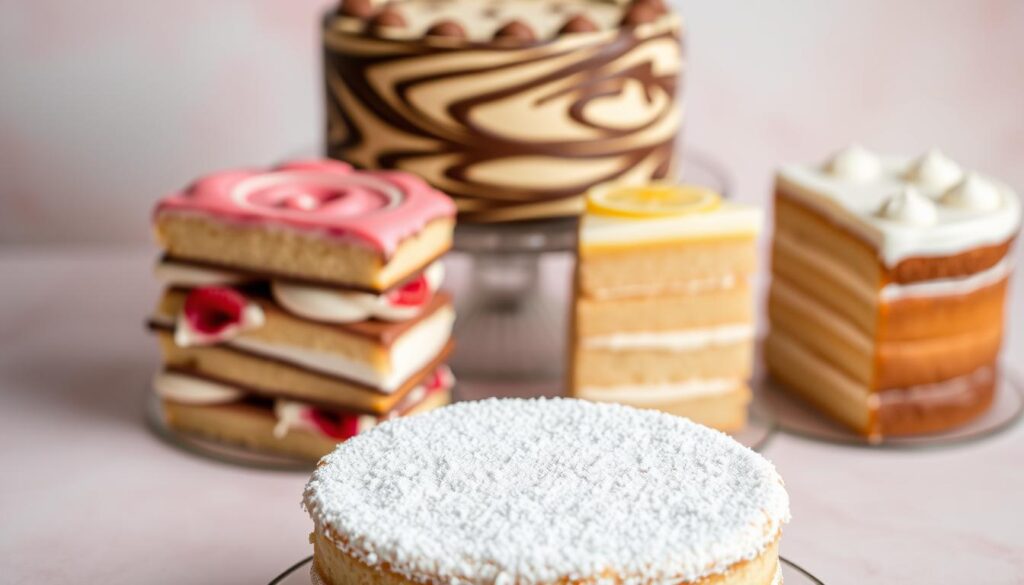
Victoria Sponge Cake is a favorite in the UK. It’s not just a recipe; it’s a blank canvas for creativity. You can add seasonal fruits, try new flavors, or make it for special diets. It’s very versatile.
Seasonal Fruit Adaptations
Adding seasonal fruits is a great way to change up the Victoria Sponge Cake. Strawberries in summer or raspberries in spring add a burst of flavor. You can mix them into the jam or use them on top.
Flavor Twists While Maintaining Authenticity
Trying new flavors can also make the cake exciting. Adding a bit of orange or lemon zest to the batter gives it a citrusy kick. Or, you can use almond or vanilla extracts for a unique taste that stays true to the cake’s roots.
Dietary Adaptations: Gluten-Free and Vegan Options
For those with dietary needs, the Victoria Sponge Cake can be made gluten-free or vegan. Use a gluten-free flour blend for those with gluten intolerance. For a vegan version, swap traditional milk and eggs with plant-based alternatives.
Troubleshooting Common Victoria Sponge Problems
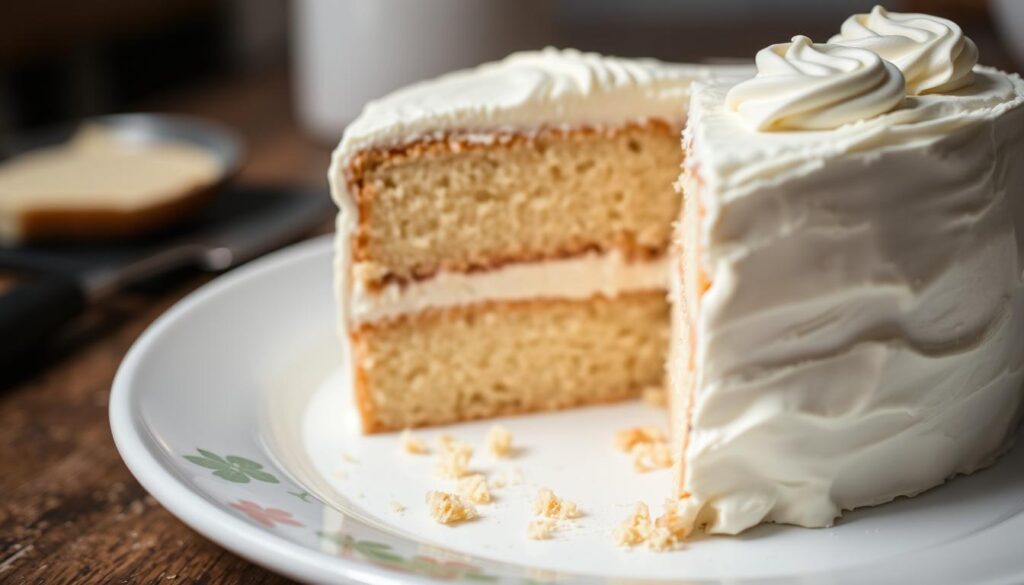
Baking a perfect Victoria Sponge Cake is an art that requires troubleshooting. Even skilled bakers face problems. But, knowing how to solve them can be a game-changer.
Common issues include cakes sinking, turning dry or dense, or rising unevenly. Let’s look at the causes and solutions for these problems.
Why Cakes Sink and How to Prevent It
A sinking cake can be a letdown. It usually happens when the cake is underbaked or the oven temperature changes suddenly. To avoid this, bake the cake until it’s golden and a toothpick comes out clean. Try not to open the oven door too often, as it can disrupt the temperature.
Tips to prevent sinking: Use the right tin size, don’t overmix, and make sure ingredients are at room temperature.
Fixing Dry or Dense Cake Issues
Dry or dense cakes often come from overmixing or wrong measurements. To fix this, accurately measure your ingredients and mix just until they’re combined.
- Use buttermilk or sour cream to add moisture.
- Avoid overbaking; check the cake frequently towards the end of the baking time.
Solutions for Uneven Rising and Baking
Uneven rising can be due to an uneven oven temperature or not preparing the cake pans right. For even rising, make sure your oven is preheated and calibrated well. Also, grease and flour your cake pans evenly.
Rotating the cake halfway through baking can also help it rise more evenly.
Conclusion: Enjoying Your Homemade Victoria Sponge Cake
Now that you’ve baked your Victoria Sponge Cake, it’s time to enjoy it. Having a slice with a cup of tea is a classic British moment. Sharing your cake with family and friends is truly special, making it perfect for any event.
Baking a Victoria Sponge Cake is more than just a recipe. It’s about making a classic UK treat that brings people together. When you take your first bite, you’ll love the light texture and the sweet jam and cream filling. Your homemade cake will quickly become a favorite, enjoyed with tea or coffee.
The joy of baking and sharing this cake is unmatched. So, indulge in your delicious sponge cake. It might become a favorite request from your loved ones. With your new baking skills, you’ll want to try new recipes and keep this beloved cake tradition alive.
FAQ
What is the traditional filling for a Victoria Sponge Cake?
The traditional filling is raspberry jam and whipped cream. The jam adds a sweet and tangy taste. The whipped cream makes it light and fluffy.
Can I make a Victoria Sponge Cake without a stand mixer?
Yes, you can make it without a stand mixer. A stand mixer helps, but you can use a handheld electric mixer or a whisk. Just be ready to work a bit harder.
How do I ensure my Victoria Sponge Cake is evenly baked?
To bake it evenly, preheat your oven right. Use the right rack and rotate the cakes halfway. A thermometer can also check the cakes’ internal temperature.
Can I make a gluten-free Victoria Sponge Cake?
Yes, you can make a gluten-free version. Use a gluten-free flour blend instead of wheat flour. But remember, gluten-free flours can be different. You might need to adjust the flour ratio and add xanthan gum or guar gum for texture.
How do I store leftover Victoria Sponge Cake?
Store leftover cake in an airtight container at room temperature for up to 3 days. For longer storage, keep it in the fridge for up to 5 days. Always bring it back to room temperature before serving.
Can I freeze Victoria Sponge Cake?
Yes, you can freeze it. Wrap the cake tightly in plastic wrap or foil and put it in a freezer-safe bag. It can be frozen for up to 3 months. Thaw it at room temperature or in the fridge before serving.
What is the best way to level my Victoria Sponge Cake layers?
Use a serrated knife or a cake leveler to level the layers. This makes the cake stable and even.
Can I make a Victoria Sponge Cake in advance?
Yes, you can make it ahead of time. Bake the layers and store them in an airtight container or freeze them. Prepare the jam and whipped cream just before assembling the cake.
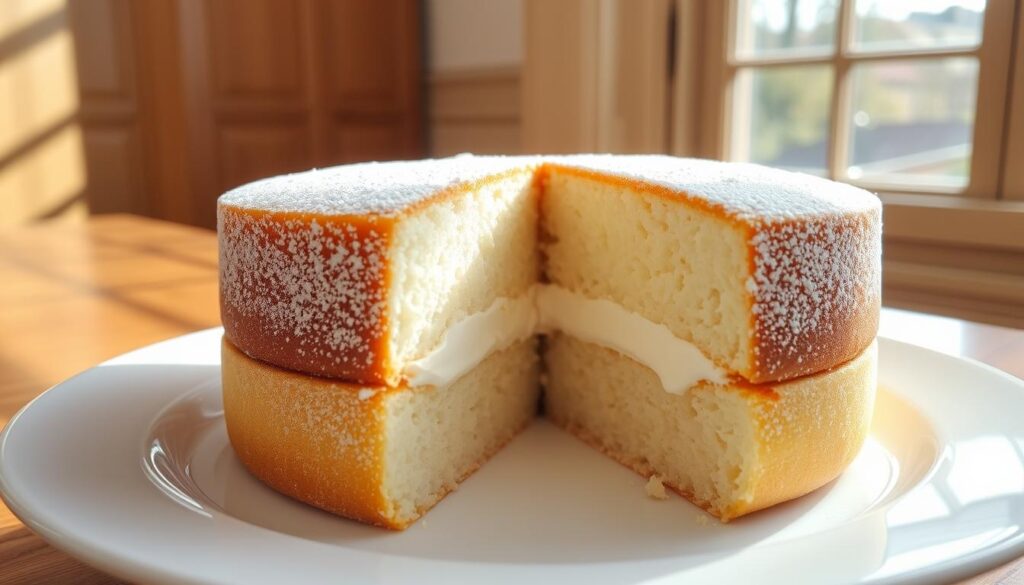
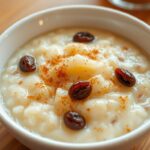

Pingback: Authentic UK Treacle Tart Recipe: A Sweet Delight